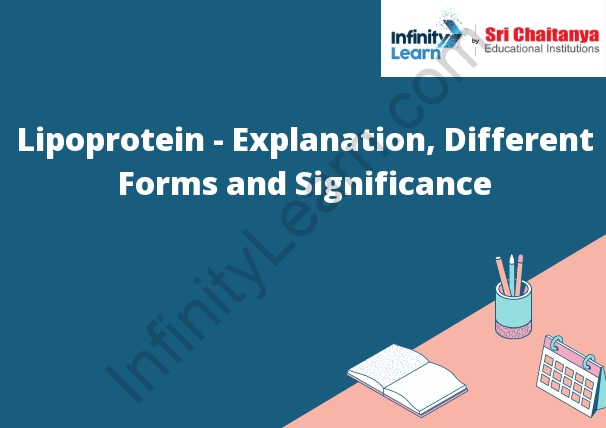Table of Contents
Introduction to Lipoprotein
Lipoprotein is a molecule that is made up of fat (lipid) and protein. Lipoprotein is important because it helps to transport cholesterol and other lipids in the blood. There are several different types of lipoprotein, including low-density lipoprotein (LDL), high-density lipoprotein (HDL), and very low-density lipoprotein (VLDL).
A lipoprotein is a molecule that is formed by attaching a lipid to a protein. The lipid can be a triglyceride, cholesterol, or phospholipid. The protein can be a globular protein, such as albumin, or a structural protein, such as apoprotein. Lipoproteins are found in the bloodstream and play a role in the transport of lipids.
There are several different types of lipoproteins, including chylomicrons, very low-density lipoproteins (VLDLs), low-density lipoproteins (LDLs), and high-density lipoproteins (HDLs). Chylomicrons are the largest lipoproteins and are formed by the digestion of dietary fat. VLDLs are formed in the liver and carry triglycerides from the liver to other tissues. LDLs are the most common type of lipoprotein and are formed when VLDLs lose their triglycerides. HDLs are the smallest and most dense lipoproteins. They are formed when LDLs lose their cholesterol.
Lipoproteins play a important role in the transport of lipids in the body. They help to shuttle cholesterol and other lipids from the liver to other tissues, where they can be used for energy or storage. Lipoproteins also help to protect the body from the harmful effects of cholesterol. HDLs can scavenge cholesterol from the arteries and transport it back to the liver, where it can be excreted from the body.

Different Forms of Lipoprotein
There are five major types of lipoprotein: chylomicrons, very low-density lipoprotein (VLDL), low-density lipoprotein (LDL), intermediate-density lipoprotein (IDL), and high-density lipoprotein (HDL).
Chylomicrons are the largest and least dense type of lipoprotein. They are composed of triglycerides, cholesterol, and proteins and are released by the intestines after eating. Chylomicrons carry dietary cholesterol and triglycerides from the intestine to the liver, where they are converted into VLDL particles.
VLDL is the main carrier of triglycerides in the blood. It is composed of triglycerides, cholesterol, and proteins. VLDL is produced by the liver and delivers triglycerides to muscles and other tissues.
LDL is the most common type of lipoprotein. It is composed of cholesterol and proteins and is responsible for transporting cholesterol from the liver to other parts of the body.
IDL is a transitional type of lipoprotein that is formed when VLDL particles lose some of their triglycerides.
HDL is the smallest and most dense type of lipoprotein. It is composed of cholesterol and proteins and is responsible for transporting cholesterol from other parts of the body to the liver.
Chylomicrons
are lipoproteins that are synthesized in the small intestine and are responsible for the transport of dietary lipids to other tissues.
The small intestine is responsible for the synthesis of chylomicrons, which are lipoproteins that are responsible for the transport of dietary lipids to other tissues. Chylomicrons are formed in the small intestine by the combination of triglycerides with apolipoprotein B48. These lipoproteins are then released into the lymphatic system, where they travel to the liver. The liver extracts the lipids from the chylomicrons and stores them in the form of hepatic triglycerides. The chylomicrons are then degraded and the apolipoprotein B48 is recycled.
Very Low Density Lipoprotein (VLDL)
VLDL is a type of lipoprotein that is produced by the liver. It is composed of triglycerides, cholesterol, and protein. VLDL is released into the bloodstream and is responsible for delivering triglycerides to the tissues and organs. VLDL is also responsible for removing cholesterol from the tissues and organs.
Low Density Lipoprotein
LDL is a type of cholesterol transport molecule. It is a “lipoprotein,” meaning it is made of both proteins and lipids (fats). LDL is made up of mostly cholesterol, with a small amount of other proteins.
LDL is often called the “bad cholesterol” because it can contribute to the development of atherosclerosis, a condition in which cholesterol and other materials build up in the arteries, leading to a narrowing of the arteries and an increase in the risk of heart attack and stroke.
LDL is transported in the blood plasma, and its concentration in the plasma is an indicator of a person’s risk for heart disease. LDL cholesterol levels that are too high can increase the risk for heart disease.
High Density Lipoprotein
HDL is a lipoprotein particle that is found in the blood. It is high in density because it contains a high proportion of protein and cholesterol. HDL is important because it helps to remove cholesterol from the blood.









